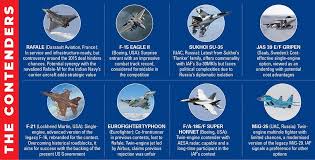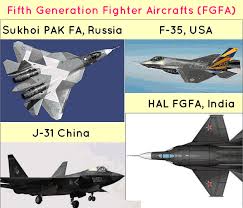
My article published in the Life of Soldier e-magazine Jan 25.
Air shows are events where aviation enthusiasts, industry professionals, and the general public gather to witness aerial displays and learn about the latest developments in aviation technology. These events typically combine trade exhibitions with public air displays. They include Aerobatic performances by military and civilian aircraft, demonstrations of fighter jets, helicopters, and commercial planes, static displays, trade exhibitions, and seminars. These air shows are a platform for launching new aircraft and technologies and promoting international aviation collaboration. Major international air shows include the Paris Air Show, Farnborough International Air Show (UK), Dubai Air Show (UAE), Singapore Air Show, MAKS Air Show (Russia), and Aero India.
Aero India, a global event for defence and aerospace stakeholders, is a biennial air show and aerospace exhibition held at the Yelahanka Air Force Station in Bengaluru, India. What sets Aero India apart is its unique focus on promoting international aviation collaboration and investment in the Indian defence sector. Organised by the Ministry of Defence, it is one of Asia’s most significant aerospace and defence events, showcasing both civilian and military aviation. The event includes displays by the Indian Air Force (IAF) and international aerobatic teams, static displays for public viewing, business exhibitions, seminars & conferences.
Building on the success of past editions, Aero India 2025 is set to be a landmark event. Scheduled from February 10 to 14, 2025, the event has already garnered significant interest, with over 240 exhibitors confirming their participation. The anticipation is high, and the excitement is palpable as the defence strategic community and journalists are already discussing the new attractions expected to be unveiled during the show.
Expected Attractions of Aero India 2025
The air show will feature the latest advancements in civil, military, and space aviation, offering domestic and international companies a platform to showcase their innovations. Highlights include spectacular aerobatic performances, cutting-edge defence technologies, and industry presentations. Exhibition pavilions will highlight India’s growing role in defence innovation, with a focus on advanced avionics, engines, drones, simulators, and integrated defence systems. The event will offer ample networking opportunities and business development platforms for stakeholders across the aerospace and defence sectors.
Aerial Displays. Air Display during Aero India. Aero India 2025 will feature thrilling aerial displays by Indian and international aerobatic teams and military aircraft. Performances from the Indian Air Force (IAF) would likely include Sukhoi Su-30MKI and Rafale jets demonstrating combat manoeuvres, Tejas Light Combat Aircraft (LCA) showcasing its agility and advanced capabilities, and Helicopter displays by the Light Utility Helicopter (LUH). Air Display would have the Surya Kiran Aerobatic Team flying Hawk Mk132 aircraft, providing breath-taking formations, and the Sarang team performing aerobatic manoeuvres with HAL Dhruv helicopters. Aircraft from global manufacturers like the F-16, Rafale, and Eurofighter Typhoons may also be seen in the Indian skies.
Exhibitions, Conferences and Seminars. Aero India 2025 will feature expansive exhibition halls housing displays from global aerospace giants, defence contractors, and Indian startups. These exhibits range from advanced avionics and engines to drones, simulators, and integrated defence systems. A series of meetings and seminars will focus on themes such as artificial intelligence in aviation, advancements in unmanned systems, and sustainability in aerospace. These sessions will provide a platform for experts to share insights and discuss the industry’s future trajectory.
Defence Research and Development Organisation (DRDO). During Aero India 2025, the DRDO is expected to showcase its latest advancements in defence technology. DRDO may present its latest advancements in UAVs (unmanned aerial vehicles), missile systems such as Akash-NG and Astra, and cutting-edge technologies supporting India’s hypersonic and space-defence initiatives. The exhibition would also focus on future-ready technologies such as hypersonic weapons, stealth technologies, and artificial intelligence-based defence systems. DRDO’s collaboration with the private sector to boost defence exports will also be a key theme.
Indian Defence PSU Participation in Aero India. Aero India 2025 will witness strong participation from India’s Defence Public Sector Undertakings (PSUs), including Hindustan Aeronautics Limited (HAL), Bharat Electronics Limited (BEL), Bharat Dynamics Limited (BDL), and others. These PSUs will showcase their latest advancements in Indigenous aerospace and defence technologies, supporting the government’s “Atmanirbhar Bharat” initiative. HAL, in particular, will focus on promoting export opportunities for the Tejas Light Combat Aircraft and helicopter platforms. Expect advanced radar systems, electronic warfare equipment, and communication technologies from BEL. It might also highlight AI-driven defence solutions and innovative battlefield management systems. BDL will likely feature missile systems, including indigenous surface-to-air and anti-tank guided missiles. Given the increasing focus on multi-domain operations, companies like Mazagon Dock Shipbuilders and Garden Reach Shipbuilders may promote naval platforms.
Hindustan Aeronautics Limited (HAL) is the key PSU in promoting Made in India products, such as the Tejas Light Combat Aircraft and Light Utility Helicopter (LUH). These platforms not only demonstrate Indian engineering and technological prowess but also enhance defence capabilities by reducing reliance on foreign suppliers. HAL is expected to showcase a wide range of aerospace innovations, and it generally showcases and announces its new projects and updates the progress of the previous ones. An update on the progress of India’s indigenous fighter aircraft projects, i.e. Tejas Mk II and fifth generation AMCA, by HAL and Aeronautical Development Agency (ADA) would be expected. Advanced Light Helicopter (ALH) Dhruv, LCH (Light Combat Helicopter) Prachand, and the HTT-40 trainer aircraft will likely feature prominently. HAL’s progress on its CATS Program and the indigenous fighter aircraft engine project (by GTRE) will also be eagerly awaited.
Startups and Innovation. The 2025 edition aims to underscore the pivotal role of startups and MSMEs (Micro, Small, and Medium Enterprises) in the aerospace sector. Dedicated zones for startups will enable budding innovators to network with investors and showcase their technologies. The increasing focus of Indian firms on designing and producing critical defence technologies locally will be a source of inspiration and hope for the future of the industry.
International Participation. Aero India’s reputation as a premier aerospace event ensures strong international participation. Delegations from countries like the United States, Russia, France, Israel, and the United Kingdom are expected to attend. Aerospace giants like Boeing, Lockheed Martin, Dassault Aviation, and Airbus will showcase their latest technologies alongside Indian firms like HAL (Hindustan Aeronautics Limited) and DRDO (Defence Research and Development Organisation). These companies are vying for multi-billion-dollar defence contracts with the Indian government, making Aero India a crucial negotiation platform. These firms will exhibit a variety of aerospace technologies, from advanced fighter jets and drones to cutting-edge avionics and defence systems.
Russian Presence in Aero India 2025. The Russian presence in Aero India 2023 was minimal. However, in recent times, Russia has been pursuing the sale of its defence equipment with renewed vigour. Russia is expected to have a strong presence at Aero India 2025. Russia would aim to reinforce its commitment to Indo-Russian defence ties and potentially spark interest in future collaborations or technology transfers involving advanced aerospace systems. Additionally, there is speculation that Russia might showcase its Su-57E fifth-generation stealth fighter jet.
Shaping the Future of Aerospace
India’s Growing Aerospace Capabilities. Aero India 2025 reflects India’s strides in the aerospace and defence sectors. Recent initiatives, such as the “Make in India” and “Aatmanirbhar Bharat” (Self-Reliant India) campaigns, have bolstered the country’s indigenous manufacturing capabilities. The event is crucial in advancing the Indian government’s initiatives.
Indigenous Aircraft and Technology. Indian defence manufacturers (DPSUs and private sector) will actively participate in showcasing home-grown technologies. India’s indigenously developed aircraft, such as the Tejas Light Combat Aircraft (LCA), and upcoming projects like the Advanced Medium Combat Aircraft (AMCA), are expected to take centre stage. The development of these aircraft underscores India’s commitment to self-reliance in defence production.
Defence Exports. Over the years, India has transitioned from a major arms importer to a defence exporter. The Aero India platform showcases India’s growing prowess in developing systems for international markets. Aero India will highlight the export potential of Indian-made defence products, like the Tejas fighter and advanced helicopters.
Bilateral Collaborations. Aero India 2025 will serve as a venue for countries to strengthen bilateral defence ties through agreements, joint ventures, and partnerships. With delegations from numerous countries expected, the event underscores India’s role as a global hub for aerospace collaboration, fostering a sense of optimism and encouragement about the potential for global impact.
Partnerships and Investments. The event facilitates partnerships between Indian and foreign firms, enhancing technology transfer and co-development. Agreements signed at Aero India often pave the way for strategic investments and joint ventures. Joint ventures with global giants like Lockheed Martin, Boeing, and Dassault Aviation help set up manufacturing facilities in India, aligning with the Make in India initiative.
Strengthening Diplomacy. Aero India also acts as a diplomatic platform, with defence ministers and officials from various countries engaging in dialogue to bolster military cooperation and trade.
Economic and Strategic Importance. Aero India 2025 holds immense economic and strategic significance for India. The event boosts local businesses and the hospitality sector in Bengaluru, creating job opportunities and driving economic growth.
By hosting an event of this magnitude, India reinforces its position as a key player in global aerospace and defence, attracting investments and solidifying partnerships. The countdown to Aero India 2025 has begun. The event will highlight India’s growing prominence in the global defence sector with various attractions, including live aerobatic displays and the unveiling of new projects. It promises to foster collaboration between international and domestic stakeholders, providing opportunities for business growth, knowledge exchange, and technological advancement. Aero India 2025 is poised to celebrate innovation and strengthen India’s position as a key player in the global aerospace industry.
Please do Comment.
For regular updates, please register your email here:-
References and credits
To all the online sites and channels.
Disclaimer:
Information and data included in the blog are for educational & non-commercial purposes only and have been carefully adapted, excerpted, or edited from reliable and accurate sources. All copyrighted material belongs to respective owners and is provided only for wider dissemination.


